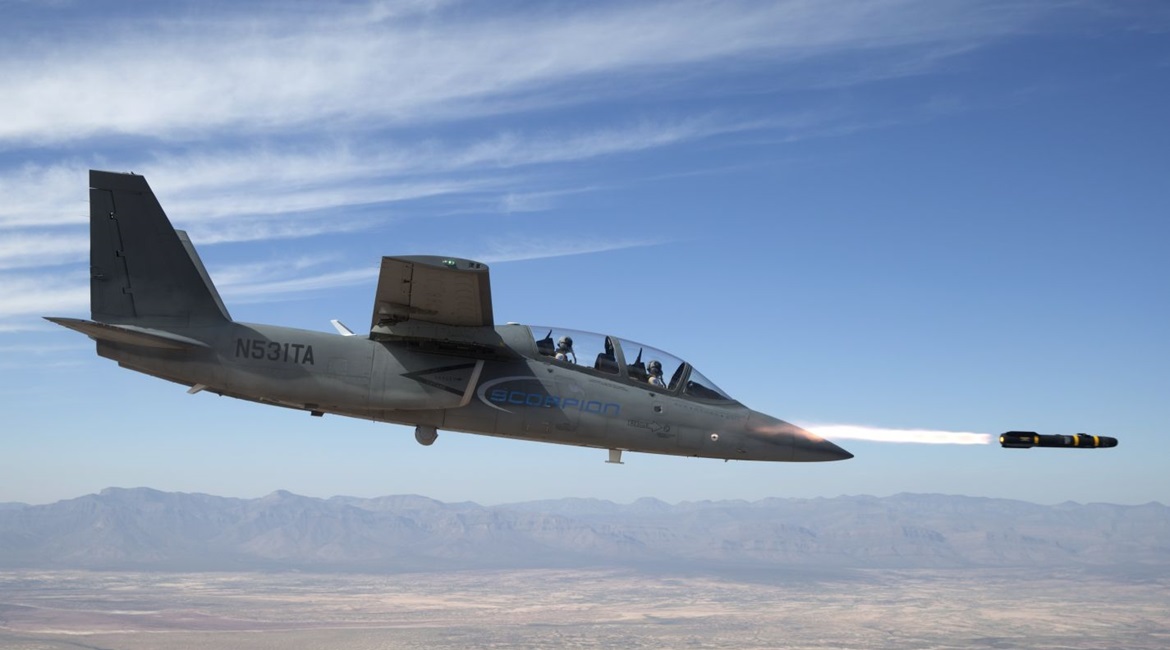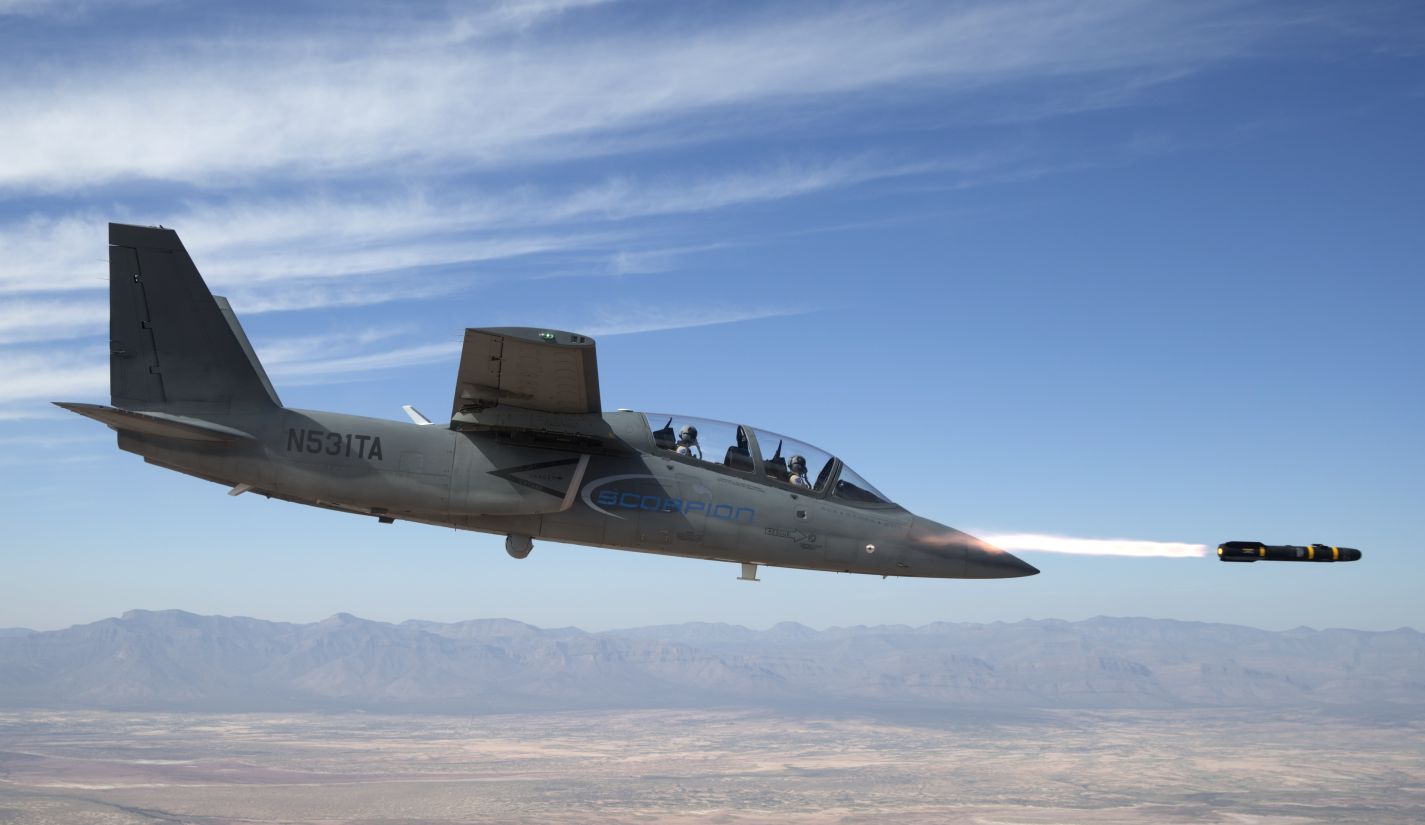
Textron Aviation Defense and Textron Systems are offering its Synturian control and collaboration technology to the US Air Force (USAF) as the service experiments with manned-unmanned teaming (MUM-T) capabilities.
Brett Pierson, Textron Aviation Defense vice-president for light attack aircraft and Scorpion, told Jane’s on 6 September that Textron Systems Synturian is a computer programme with a point-and-click interface that can command-and-control (C2) unmanned aerial vehicles (UAVs) from any laptop computer. Traditional aircraft control interfaces, he said, require a stick and a throttle.

Textron Aviation Defense has demonstrated its Synturian control and collaboration technology with its Scorpion ISR aircraft. (Textron)
According to Pierson, Synturian displays a window that pops up that tells the user which vehicles in the vicinity can be controlled. He said this is much like how a cellphone user walks into a new building and has their phone automatically detect which wireless internet signals are available for connection. Pierson said a user can then simply choose from a yes or no command prompt on whether to take control of a nearby aircraft.
Pierson said Textron Aviation Defense and Textron Systems simulated a Nightwarden tactical UAV and an Aerosonde small unmanned aerial system (sUAS) in a mid-2018 demo. This demonstration also featured flight acquisition and control of the simulated air vehicle and sensors.
Using Synturian, the Scorpion air crew can set up flight route waypoints, establish surveillance orbits, steer the sensor, and change the unmanned aircraft heading, airspeed, and altitude. The simulated UAVs were then able to operate without further aircrew interaction, according to a company statement. Pierson said the company considered this a successful test because Synturian was commanding and controlling another aircraft, and was receiving, upon command, real-time video imagery from a FLIR camera on one of the UAVs.
Looking to read the full article?
Gain unlimited access to Janes news and more...




